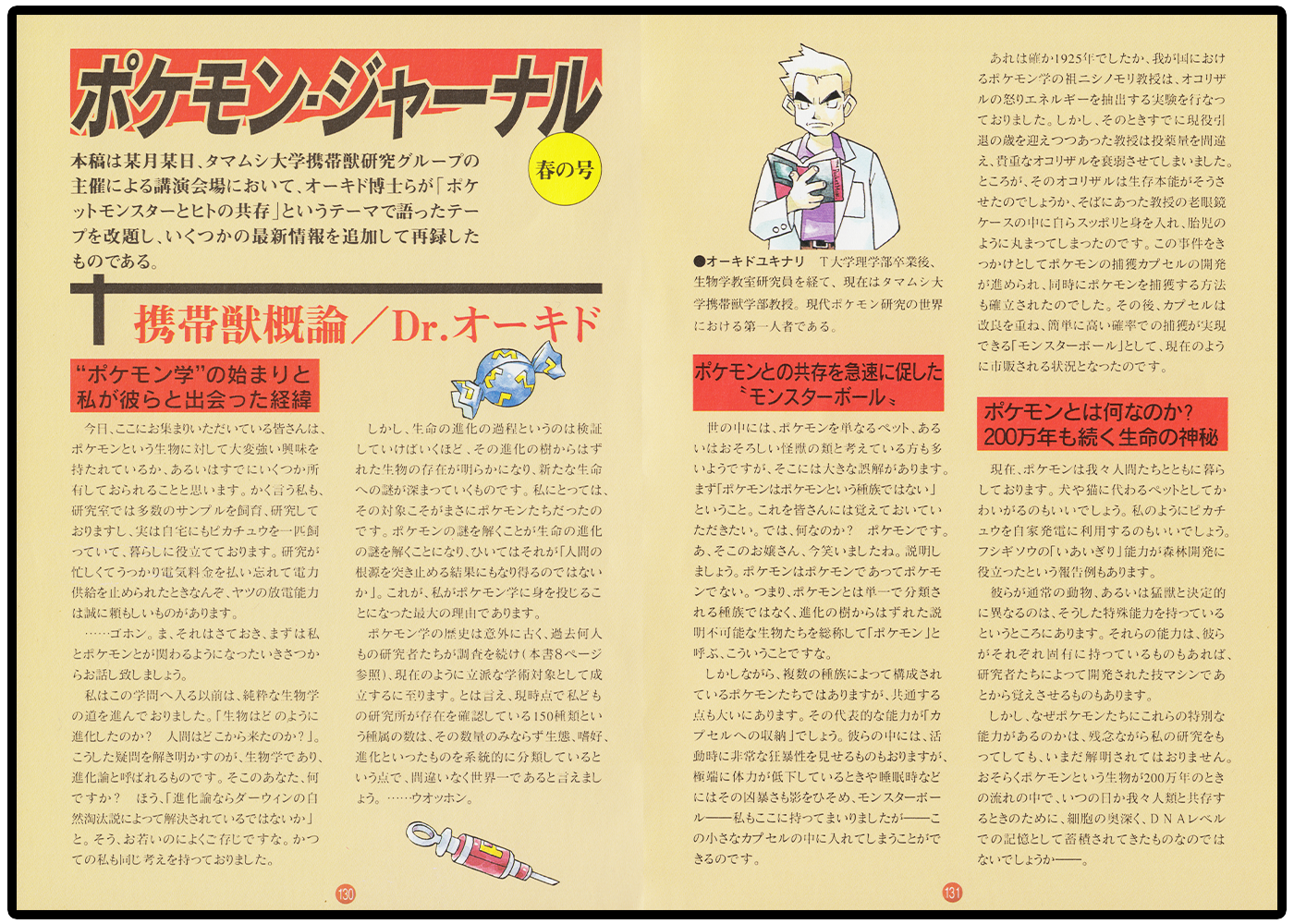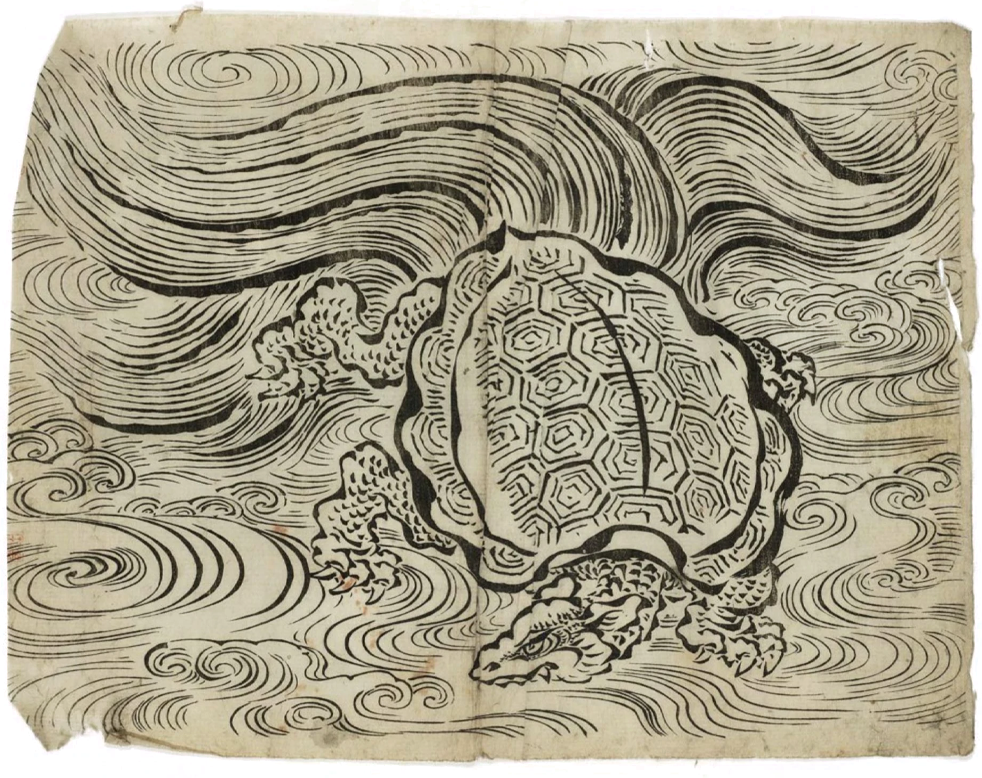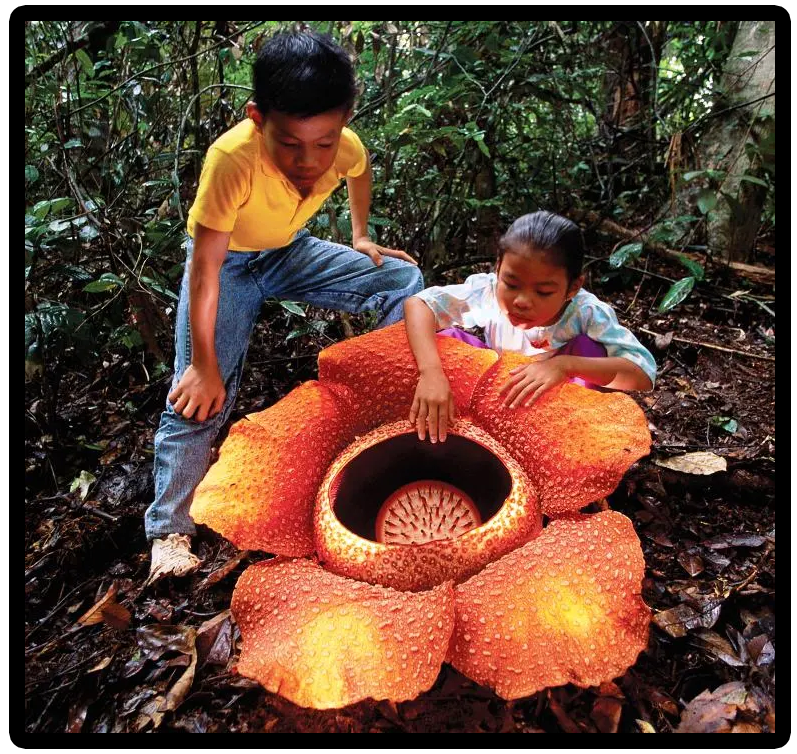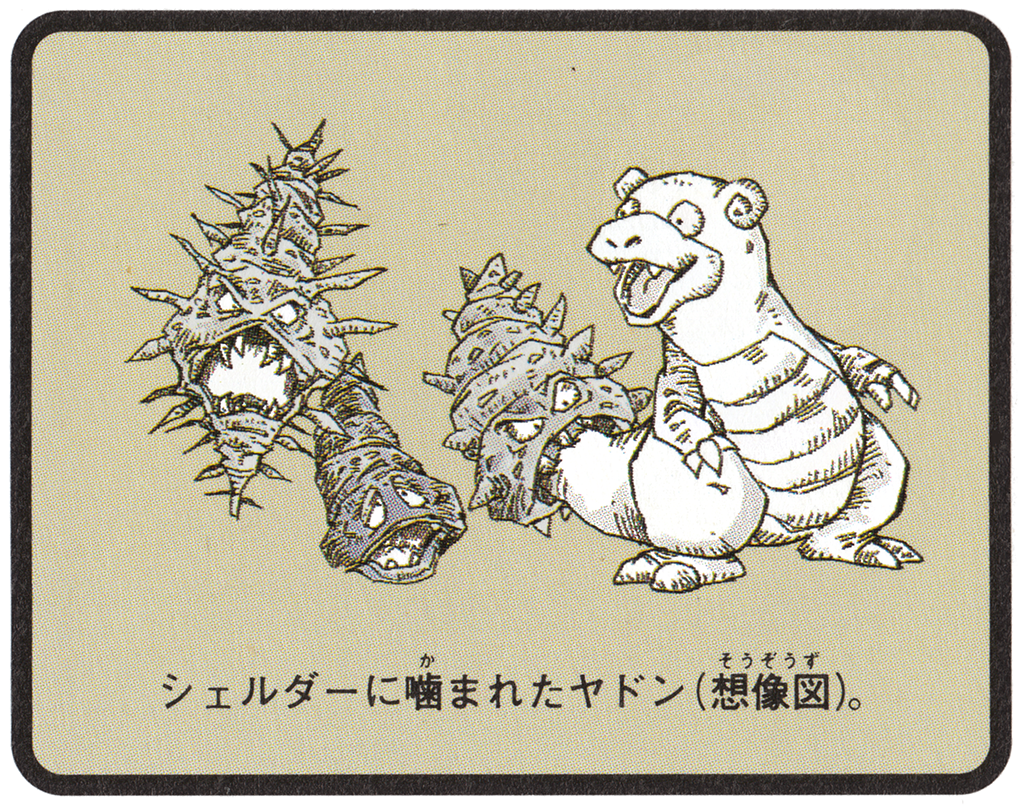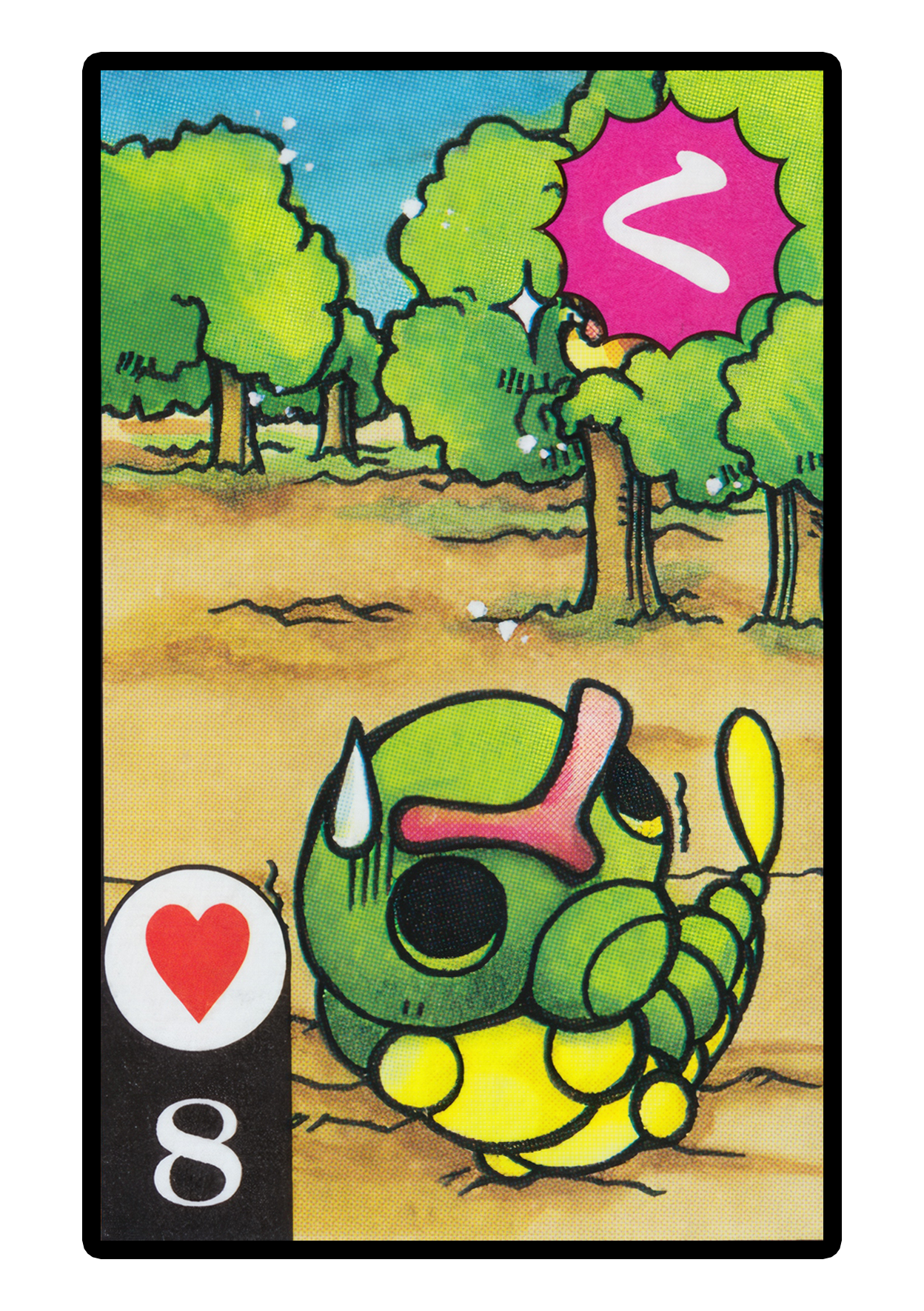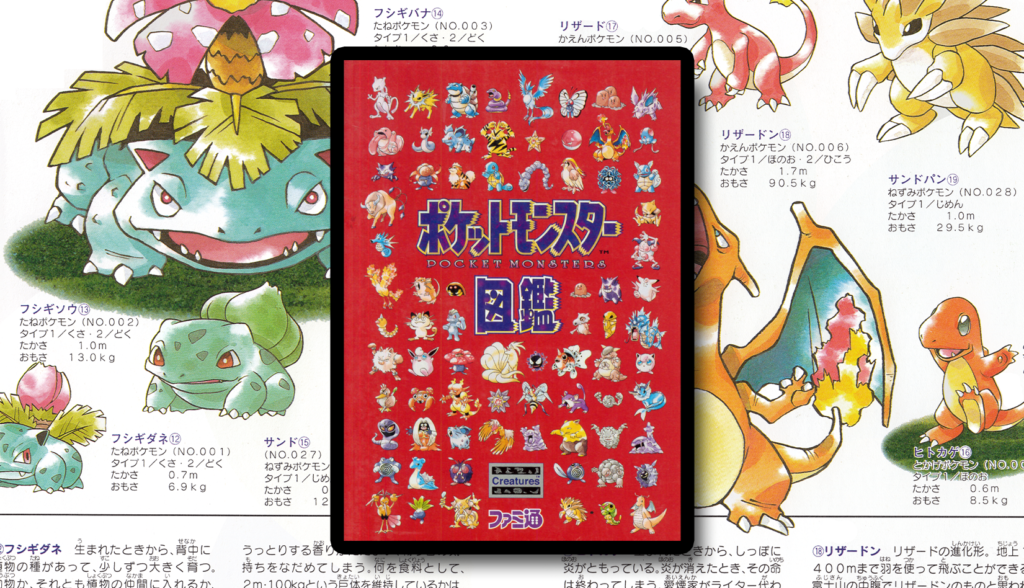
Translation: 1996 Pokédex Book (Part 4)
All 150 Pokédex entries and the introduction
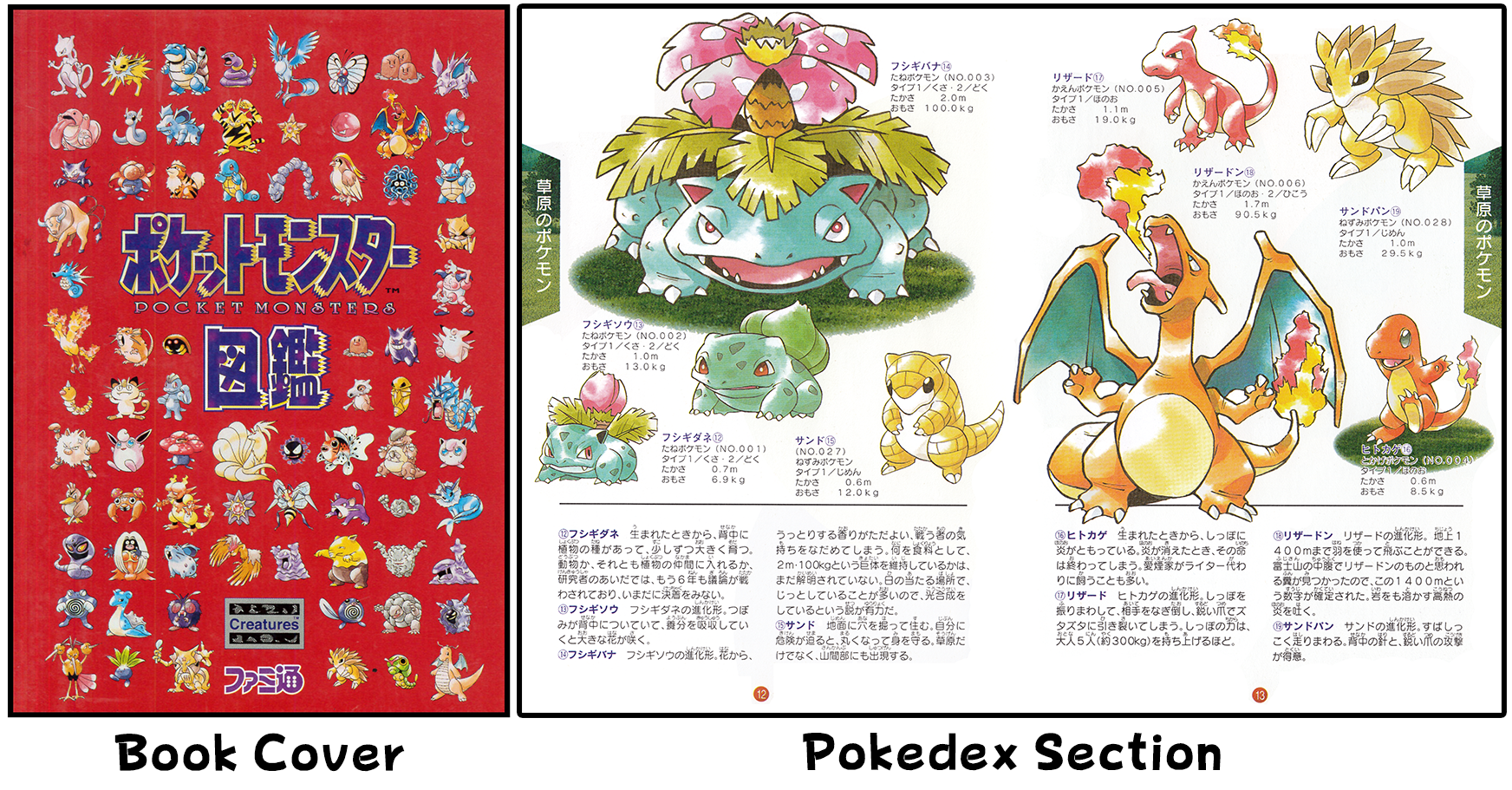
Written by Dr Lava, June 17 2021
This is part 4 of 7 of this translation series. If you’d like to return to a previous part, click one of the links below. Or if you’d rather absorb this 47 page translation in video form rather than reading it through text, click here.
Skip to: Part 1 | 2 | 3 | 4 | 5 | 6 | 7 | Journal | Maps | Itoh Art | Interview | More

“#55 Zubat: They live in murky caves on mountains and similar environments. Because they live in perpetual darkness, their eyes retrogressed and disappeared. They emit ultrasonic cries for flitting around in darkness. Apparently, it is very rare for them to fly outside their caves.”
Dr Lava notes: Lots of people think bats in the real world are blind, thus the common expression, “blind as a bat.” But that’s not actually true — bats can see just fine, some even better than humans. They do spend a lot of their lives in darkness though, so they developed powerful hearing and echolocation abilities through the process of evolution. This Pokedex entry takes evolution a step further, explaining that Zubat not only gained echolocation, but its eyes disappeared entirely. In the Professor Oak’s Journal section of this book, he explains these sorts of traits are a result of Pokemon and animal’s divergent evolution.

“#56 Golbat: Zubat’s evolution. They bite with their sharp fangs and suck 300 milliliters in one chomp.”
Waters-Edge Pokemon
”Pokémon that live in, or near bodies of water, can be roughly split into two types. One type consists of Plant-type Pokémon that are vulnerable to Fire-type attacks. The other type are animals that live in shallow waters. The latter group have Water-type moves that make them strong against fire.

“#57 Squirtle: When it retracts its long neck into its shell, it squirts out water with vigorous force. Water-type moves of this sort are effective against Fire, Ground, and Rock-type Pokémon. It is unfortunate, but this Pokémon’s habitat is unknown.”
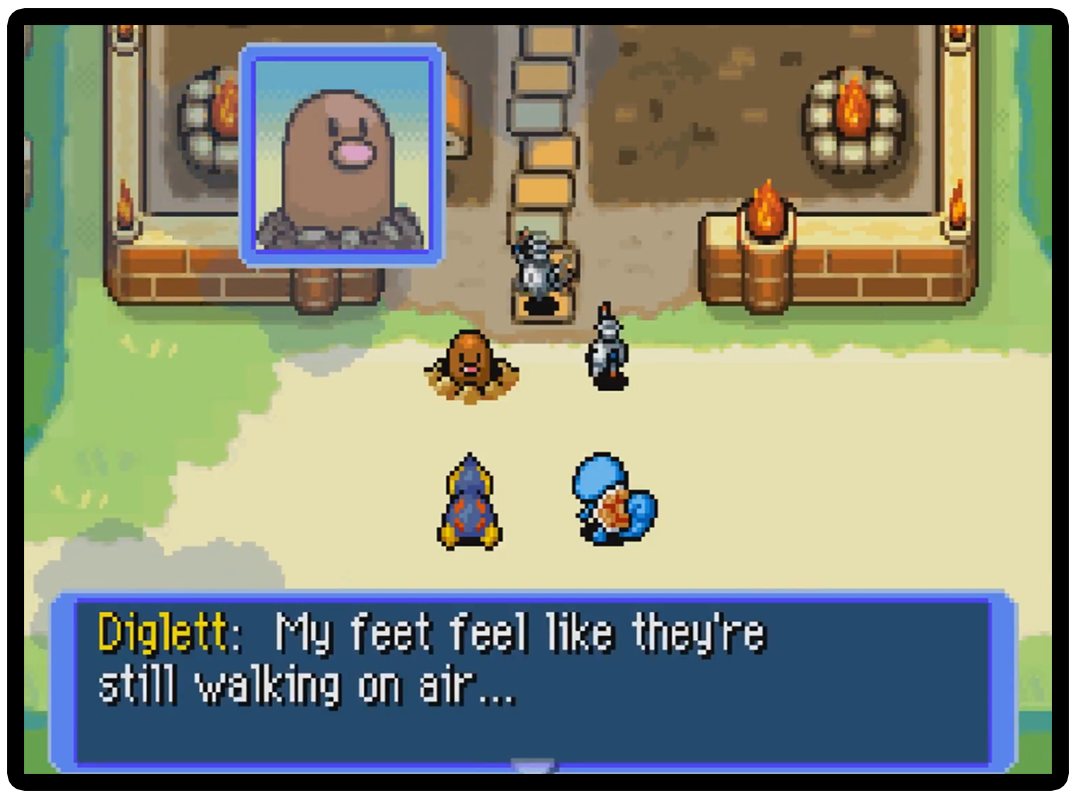
Dr Lava notes: Presumably its habitat is unknown because as a starter Pokemon, it can’t be found anywhere in Kanto — except in Professor Oak’s lab of course. You never actually get to see Squirtle’s long neck, but it’s worth noting this fact was later included in FireRed’s Pokedex as well. So apparently Squirtle’s neck is similar to Doduo’s wings, or how Pokemon Mystery Dungeon talks about Diglett’s feet — you never get to see them, but they do exist.

“#58 Wartortle: Squirtle’s evolution. Their profile is cute when they are fighting. They are highly popular as pets. Their fur-covered tail is a symbol of longevity.”

“#59 Blastoise: Wartortle’s evolution. They make their foe faint by squashing the victim with their heavy body. Their bulk makes quick movements impossible, but they have overwhelming power to compensate. When endangered, they can draw themselves into their shell. They are well protected thanks to their armorlike shell. They are capable and reliable Pokémon that learn such effective moves as Ice Beam and Surf.”
Dr Lava notes: Entry 27 says “Ninetales, a thousand years, Blastoise, ten thousands years.” Blastoise living ten thousands years is a reference to the Minogame from Japanese mythology, a turtle who can live ten thousand years and is so old, it has seaweed for a tail. The Minogame is prominently featured in a famous Japanese fairy tale, and even though it’s a little long, it’s worth sharing as it helps explain the lore for Blastoise, Wartortle’s design, and also some Lapras lore that comes up later.
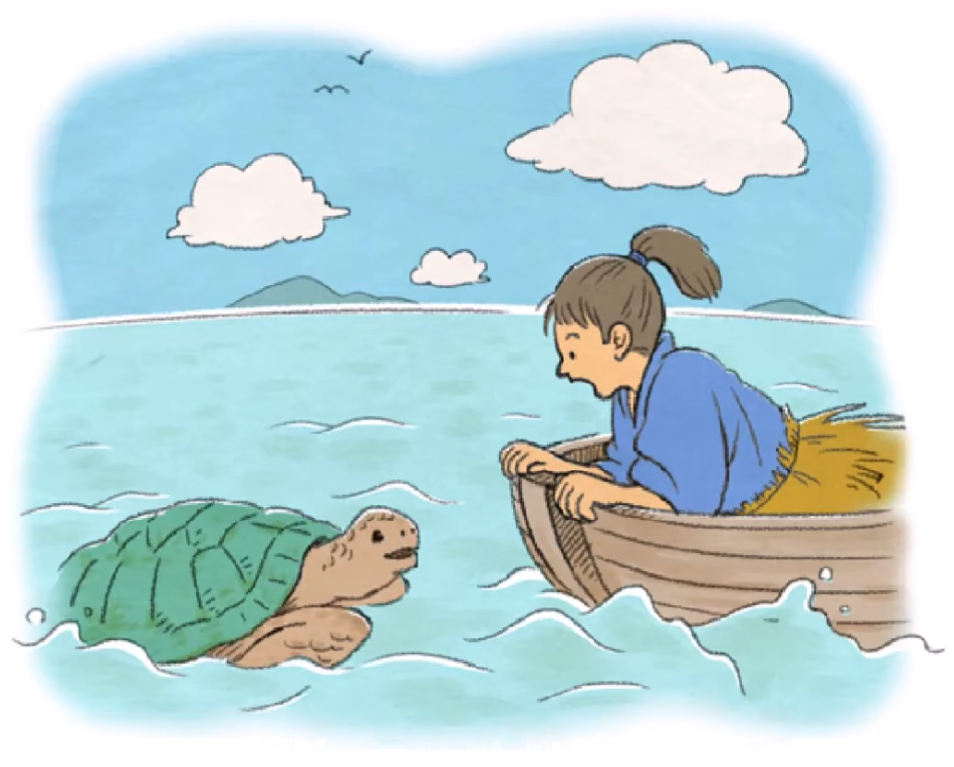
On a day like any other, a fisherman named Urashima Tarō sees a group of boys torturing a turtle, which he rescues then releases it into the ocean. The next day, a Minogame finds Tarō and tells him the turtle he saved is a princess, the daughter of Ryujin, the emperor of the sea. As thanks the Minogame takes Tarō under the ocean to Ryujin’s palace where he meets the princess, but three days later, he tells the princess he wants to return to the surface to visit his aging mother. The princess is sad to see him go, but wishes him well and gives him a mysterious box that she warns him to never open. After returning home, Tarō realizes 300 years have passed in the surface world — his home has disappeared and everyone he ever knew is dead. Stricken by grief, he decides to open the mysterious box, which bursts into a cloud of smoke and transforms him into an old man with a white beard and a bent back. The story ends with the princess’ sad, sweet voice coming from the ocean, telling him, “I told you not to open the box. Inside it was your age.”
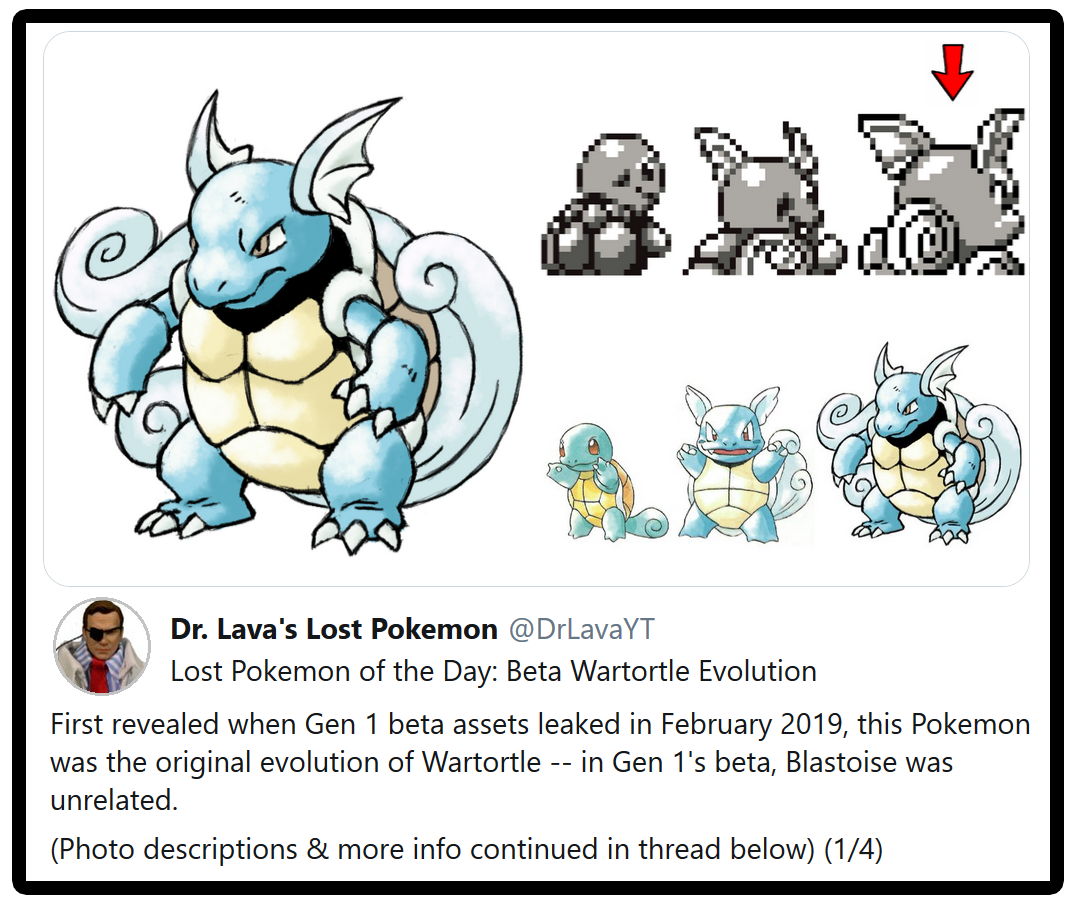
At this point you’re probably wondering what any of this has to do with Blastoise. Wartortle’s design is based on the Minogame, although it’s got a feathery, furry tail instead of literal seaweed. A 2019 leak of beta back sprites revealed that during Gen 1’s development, Wartortle originally had a different evolution, who was also based on the Minogame, while Blastoise was part of an entirely separate turtle family. It seems Game Freak decided the two turtle lines were a bit redundant, so they combined them into one, scrapping Wartortle’s evolution in the process, along with what appears to be an early pre-evolution for Blastoise. So this lore about Blastoise living ten thousand years was probably originally intended for the old Wartortle evolution, and Blastoise simply inherited the lore when it took its place. Some of this lore was also redistributed to Lapras, in much more explicit terms, whose entry we’ll get to later.

“#60 Staryu: They are commonly found on beaches. At night, their central core flashes brightly. They are gynandrous; they possess both male and female reproductive organs. If a part of their body is cut off, they regenerate the missing body parts. Their evolution appears to be linked to a special stone.”
Dr Lava notes: Pokemon didn’t have genders in Generation 1, but from Gen 2 onwards, Staryu and Starmie were both classified as “gender unknown,” or what fans usually refer to as simply “genderless.” But here we get a little more detail, with the Pokedex telling us they have both male and female reproductive organs, meaning they’re not so much genderless as they are hermaphrodites.

“#61 Starmie: Little headway has been made in the research of Starmie. Because they are encountered in the sea, they have been classified as a Water’s-edge Pokémon. However, locally, it is suspected that they are alien creatures from their geometrical body.”

“#62 Psyduck: They are always suffering from a headache. If their headache intensifies, they start using mysterious powers. They can learn a variety of moves including Strength, Surf, and Dig.”

“#63 Golduck: Psyduck’s evolution. Their hands are webbed, making them skilled swimmers. Their elegant form can be seen on lakes and similar settings. They can learn Hyper Beam, a move that has not been observed among Psyduck.”
Dr Lava notes: The book provides this illustration of Kanto’s fastest swimmers, identifying Golduck as the fastest of them all (pictured above, translated). It doesn’t say Golduck’s exact speed, but it’s somewhere in excess of 90 kilometers an hours.

“#64 Oddish: Also known as Walkimendes. At night, they walk up to 300 meters on their two roots. Being plants, it was a mystery as to why they walked. It was finally determined by a recent study that it was for the survival of the species. They scatter their pollen as they walk.”
Dr Lava notes: Oddish’s nickname Walkimendes is the sort of Japanese word play that really doesn’t work in English. When Japanese puns are used in the games, they usually get removed entirely during localization, but Nob translated this book without making any cuts, so we’ll try to explain what Walkimendes means. It’s a gag on Archimedes, the famous Greek inventor, mathematician, and astronomer. Walkimendes also breaks down to “alki men desu,” which translates into English as “we are walking men.” Because Oddish is a plant that walks. Yeah like I said, it really doesn’t work in English, so let’s move on to the next entry.

“#65 Gloom: Oddish’s evolution. Their pistil emits a horrifically foul stench that makes foes faint up to 2 kilometers away. A special stone appears to be involved in Gloom’s evolution.”

“#66 Vileplume: From their world’s-largest petals, they scatter wicked plumes of pollen that induce allergic reactions. Other Pokémon can’t get near where Vileplume live.”
Dr Lava notes: This entry says Vileplume has the largest petals in the world because Vileplume draws inspiration from the Rafflesia arnoldii, a parasitic plant that produces the largest single flower on Earth. They grow in real-life rainforests and have an overpowering odor of decaying flesh, which is why the Vileplume family have such a horrific stench.
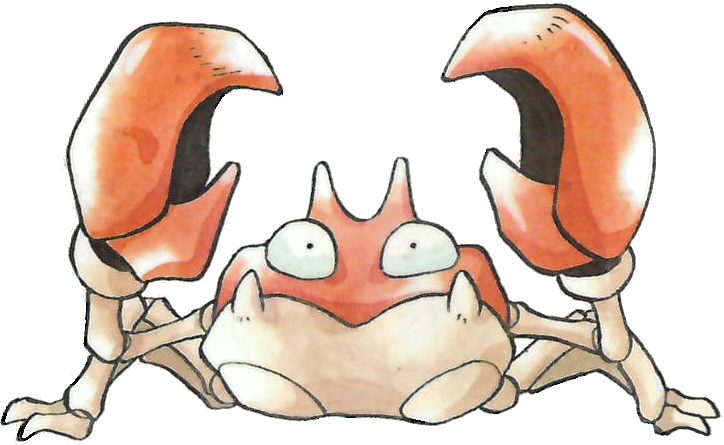
“#67 Krabby: Found near the sea. When they fight, they raise their large pincers to intimidate their foe. However, they usually prefer to avoid fighting. If a pincer is torn off, it grows back.”

“#68 Bellsprout: Their bud has the appearance of a human face. Because of it, they are said to be a type of the legendary mandrake root. They feed mainly on small insects.”

“#69 Weepinbell: Bellsprout’s evolution. The leaves are cutters for shredding foes. They spit a liquid that dissolves anything. Unlike Bellsprout, they capture and eat fairly large bugs and birds. Their feeding is an exceedingly bizarre spectacle.”

“#70 Victreebel: Thought to be Weepinbell’s evolution because of their many shared attributes. Prey are drawn with a honeylike aroma into Victreebel’s mouth where they are melted by a dissolving fluid. This Pokémon is omnivorous and will eat anything that fits in their mouth.”
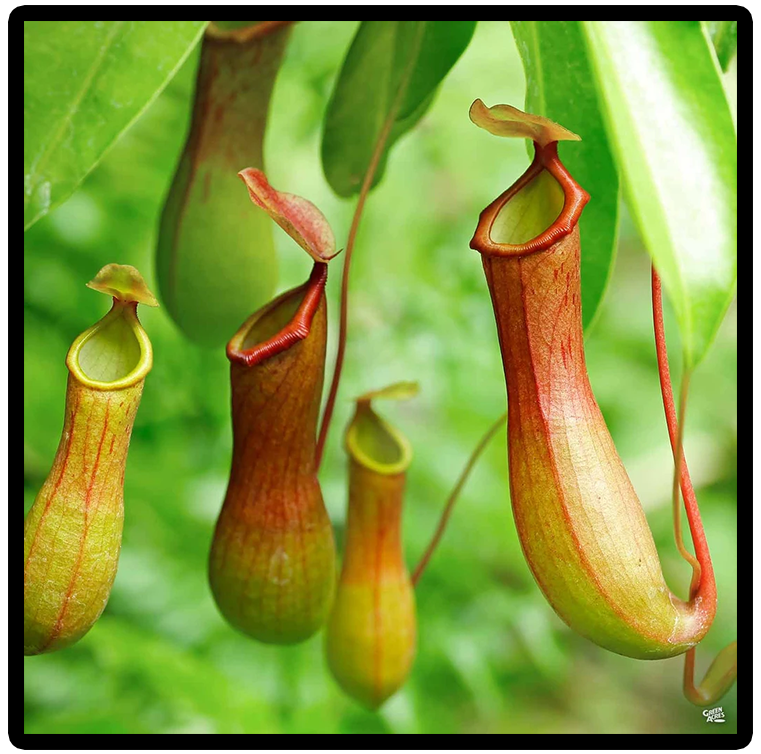
Dr Lava notes: Victreebel’s based on real-life pitcher plants that draw in prey with nectar then drown them in it. They mostly feed on insects, but have also been known to feast on mice. The Pokedex says Victreebel are omivorous and eat anything it can fit in its mouth, so presumably it’s capable of eating small Pokemon like Rattata.
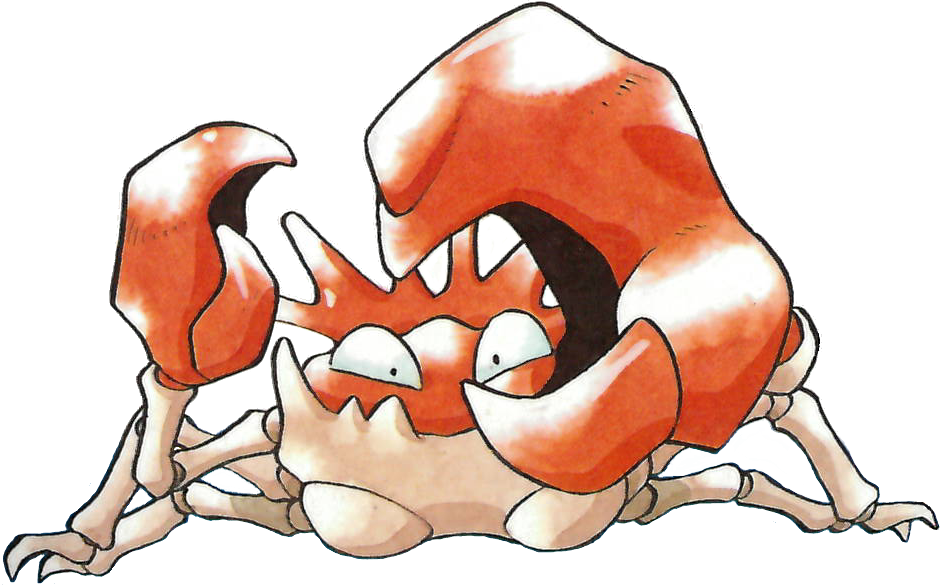
“#71 Kingler: Krabby’s evolution. The hard pincers have 10,000-horsepower strength. However, they are also too large, making this Pokémon ponderous in motion. They may also be seen deep inside caves.”

“#72 Slowpoke: They are always vacant and “out to lunch.” It is impossible to determine what they are thinking. They live by the water’s edge where they deftly catch prey with their tail. Although they have enough smarts to fish that way, they exhibit no other behavior that would indicate any greater intelligence. They frequently swim undersea in search of prey, but are often mistakenly caught themselves. While some people become happily relaxed seeing a Slowpoke, others become irritated. Perhaps those people who become soothed lead hectic lives.”

“#73 Slowbro: When Slowpoke went foraging in the sea, they were bitten on their tail by Shellder. This resulted in their evolution into Slowbro. It is unknown as to why they did not try to remove the Shellder. It is suspected that doing so would have required too much effort. While they can learn devastating physical attacks like Mega Punch and Mega Kick, they are naturally averse to fighting. Like Slowpoke, they appear to prefer zoning out.”
Dr Lava notes: Here we’re provided with an illustration of Shellder latching onto Slowpoke’s tail. This rendering bears little resemblance to an actual Shellder, instead looking more like a Pokemon called Taaban that was included in Gold & Silver’s 1997 demo, but ended up getting scrapped later in development. It’s possible Taaban was originally planned for inclusion in Gen 1 as well, which would explain why the creature on Slowbro’s tail never looked like a Shellder — but we can’t know for sure, as recent leaks have only proven that Taaban was cut from Generation 2.
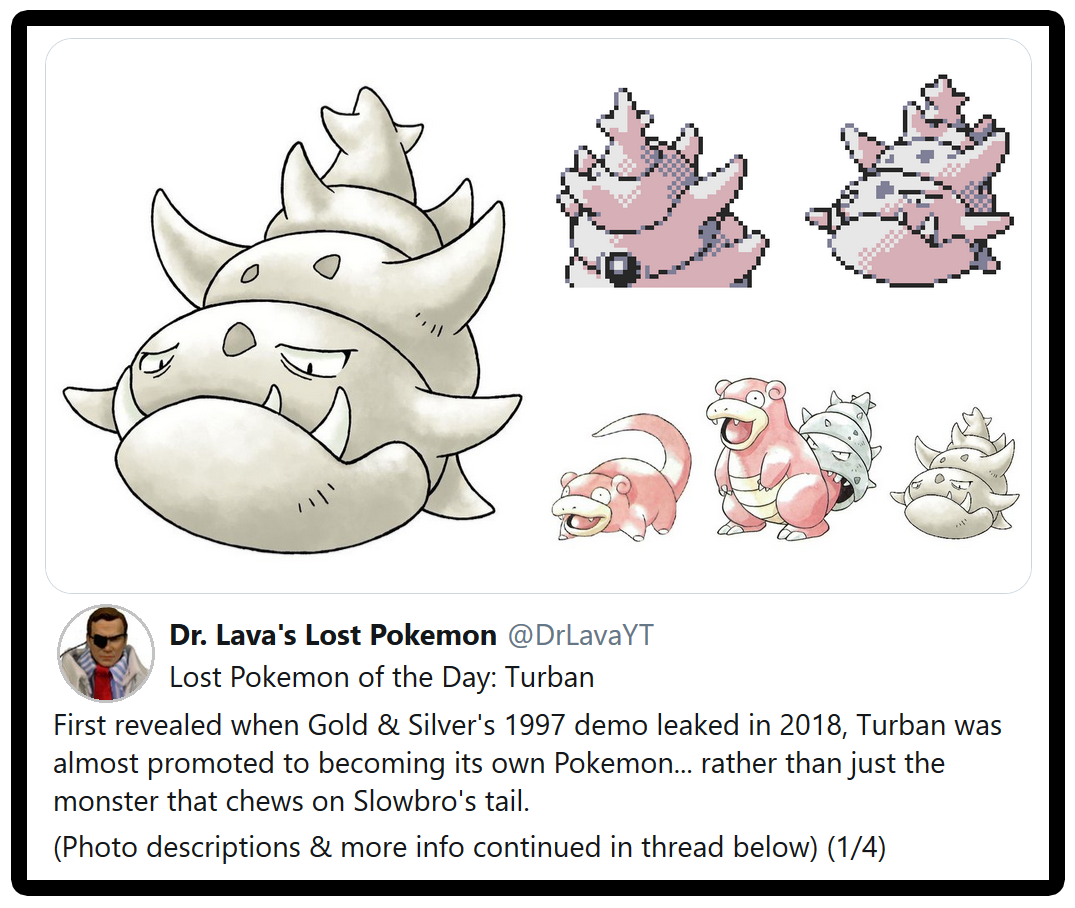
Forest Pokemon
“To small creatures, a forest is a paradise overflowing with the bounties of nature like honey-laden flowers, fruits, and nuts. Many Bug-type and small animal-type Pokémon can be seen in forests where they avail themselves to the abundant food sources. However, the kinds of food available also make large Pokémon rare in forests.”

“#74 Caterpie: When they shed their green skin to grow, they wrap themselves in silk and transform into a cocoon. Out of all the Pokémon discovered to date, they are the fastest to evolve. The Tiny Bird Pokémon Pidgey is their archenemy. If Caterpie even sense the presence of Pidgey, they quickly burrow underground. Those too slow to hide fall prey to Pidgey. While a forest may appear peaceful, there are harsh rules that dictate the survival of the fittest.”
Dr Lava notes: Although partially obscured, Corocoro’s Eight of Hearts paints us a picture of Pidgey preying on Caterpie. Throughout this Pokedex, and especially in the forest, we get a vague understanding on Kanto’s food chain — which Pokemon eat plants, which ones eat real-life animals like plankton and fish, which Pokemon get eaten, and who their predators are.

“#75 Metapod: Caterpie’s evolution. While they are encased in a hard shell, the inside is tender, making them vulnerable to harsh attacks. Worse, being mid-metamorphosis, they are challenged to move quickly.”

“#76 Butterfree: A week to ten days after evolving, Metapod undergo another evolutionary step and metamorphose into Butterfree. Their wings are covered in water-repellent, powder-like scales that enable them to fly even on rainy days.”
Dr Lava notes: This detail about water-repellent scales helping Butterfree fly in the rain can be seen on Corocoro’s Two of Diamonds.

“#77 Weedle: Common in not only forests but also grasslands. There is a small, sharp poison stinger of around 5 centimeters length on the top of their head. When faced with a foe, they wiggle the stinger for intimidation. They favor food like gingko leaves.”

“#78 Kakuna: A temporary evolutionary form taken while readying the mature form. In their previous guise as Weedle, they are said to eat many leaves in preparation for assuming this pupal form. They are almost incapable of moving.”
Skip to: Part 1 | 2 | 3 | 4 | 5 | 6 | 7 | Journal | Maps | Itoh Art | Interview | More
